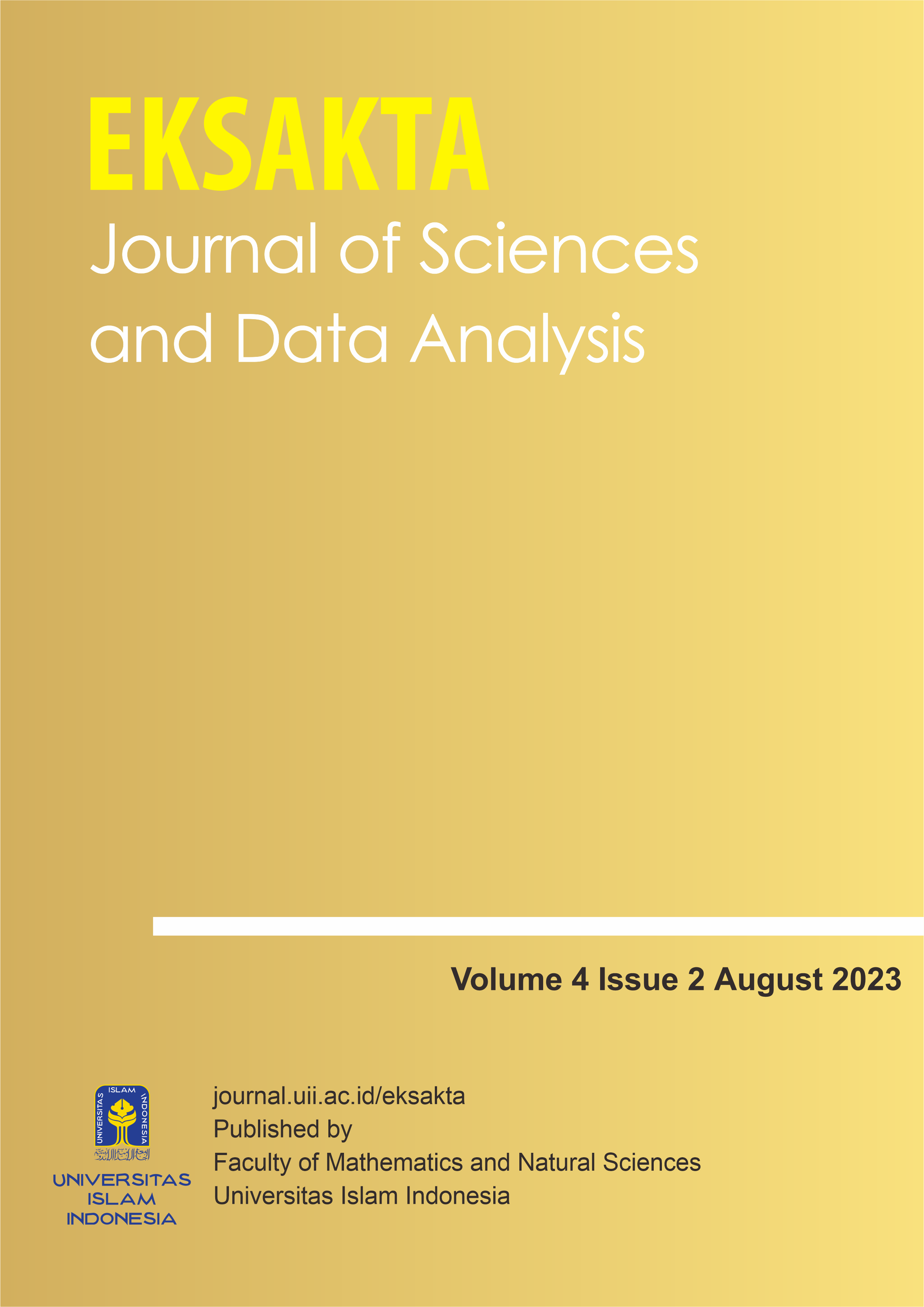Main Article Content
Abstract
The number of Covid-19 patients is the main thing to be concerned about in the time of pandemic, because Covid-19 can directly affect the sustainability of human life. Thus, adequate health services are needed in treating Covid-19 patients. One of the health services is home referral hospital. For example, in Batam City, there were 3 referral hospitals and one of them is a special hospital to hospitalized the Covid-19 patients. In this research, we were using queuing theory and Monte Carlo simulation to predict the queuing system of the patients. Queue conditions have levels density more than 100%, so that a hospital simulation is carried out using a minimum number of hospitals. It is obtained that at least 5 referral hospitals are required so that the density level becomes 83%. Based on the Monte Carlo simulation, it is suggested that the minimum number of hospitals is about three to four hospitals. When the minimum number is fulfilled, the average number of patients waiting to be treated and currently under treatment reduced to 3-4 people from the original, that is 4-5 people. The average waiting time to get treatment is about 5 minutes, originally 18 minutes and average waiting time to get treatment until it was stated that the condition had improved enough to be 5 hours which was originally 8 hours.
Keywords
Article Details
Authors who publish with this journal agree to the following terms:
- Authors retain copyright and grant the journal right of first publication with the work simultaneously licensed under a Creative Commons Attribution License that allows others to share the work with an acknowledgment of the work's authorship and initial publication in this journal.
- Authors are able to enter into separate, additional contractual arrangements for the non-exclusive distribution of the journal's published version of the work (e.g., post it to an institutional repository or publish it in a book), with an acknowledgment of its initial publication in this journal.
- Authors are permitted and encouraged to post their work online (e.g., in institutional repositories or on their website) prior to and during the submission process, as it can lead to productive exchanges, as well as earlier and greater citation of published work (See The Effect of Open Access).
References
- T. Kakiay, Dasar Teori Antrian untuk Kehidupan Nyata, Andi Offset, Yogyakarta, 2004.
- A. Yani, Analisis Penerapan Sistem Antrian untuk Optimalisasi pada Pelayanan Pendaftaran Pasien BPJS, Mabiska Jurnal 3(2) (2018) 1-10.
- F. Astrelita, Sugito, T. Wuryandari, Analisis Antrian Pengunjung dan Kinerja Sistem Dinas Kependudukan dan Pencatatan Sipil Kota Semarang, Jurnal Gaussian 4(4) (2015) 837-844.
- R. Mahessya, L. Mardianti, R. Sovia, Pemodelan dan Simulasi Sistem Antrian Pelayanan Pelanggan Menggunakan Monte Carlo pada PT Pos Indonesia (Persero) Padang, Jurnal Ilmu Komputer 6(1) (2017) 15-24.
- N. Sahab, F. Butarbutar, Penerapan Model Simulasi Monte Carlo pada Line Assembling untuk Mengurangi Waktu Antrian di PT. XXX, Jurnal Industrikrisna, 14(1) (2019) 27-33.
- Sugiyono, Metode Penelitian Kuantitatif, Kualitatif, dan R&D, Alfabeta, Bandung, 2011.
- H. Taha, Operations Research: An Introduction Eighth Edition, Pearson Prentice Hall, USA, 2007.
- A. Ravindran, Operations Research and Management Science Handbook, CRC Press, New York, 2008.
- Sugito, M. Fauzia, Analisis Sistem Antrian Kereta Api di Stasiun Besar Cirebon dan Stasiun Cirebon Prujakan, Media Statistika, 2(2) (2009) 111-120.
- H. Barreto, F, Howland, Introductory Econometrics Using Monte Carlo Simulation With Microsoft Excel, Cambridge University Press, USA, 2006.
References
T. Kakiay, Dasar Teori Antrian untuk Kehidupan Nyata, Andi Offset, Yogyakarta, 2004.
A. Yani, Analisis Penerapan Sistem Antrian untuk Optimalisasi pada Pelayanan Pendaftaran Pasien BPJS, Mabiska Jurnal 3(2) (2018) 1-10.
F. Astrelita, Sugito, T. Wuryandari, Analisis Antrian Pengunjung dan Kinerja Sistem Dinas Kependudukan dan Pencatatan Sipil Kota Semarang, Jurnal Gaussian 4(4) (2015) 837-844.
R. Mahessya, L. Mardianti, R. Sovia, Pemodelan dan Simulasi Sistem Antrian Pelayanan Pelanggan Menggunakan Monte Carlo pada PT Pos Indonesia (Persero) Padang, Jurnal Ilmu Komputer 6(1) (2017) 15-24.
N. Sahab, F. Butarbutar, Penerapan Model Simulasi Monte Carlo pada Line Assembling untuk Mengurangi Waktu Antrian di PT. XXX, Jurnal Industrikrisna, 14(1) (2019) 27-33.
Sugiyono, Metode Penelitian Kuantitatif, Kualitatif, dan R&D, Alfabeta, Bandung, 2011.
H. Taha, Operations Research: An Introduction Eighth Edition, Pearson Prentice Hall, USA, 2007.
A. Ravindran, Operations Research and Management Science Handbook, CRC Press, New York, 2008.
Sugito, M. Fauzia, Analisis Sistem Antrian Kereta Api di Stasiun Besar Cirebon dan Stasiun Cirebon Prujakan, Media Statistika, 2(2) (2009) 111-120.
H. Barreto, F, Howland, Introductory Econometrics Using Monte Carlo Simulation With Microsoft Excel, Cambridge University Press, USA, 2006.




